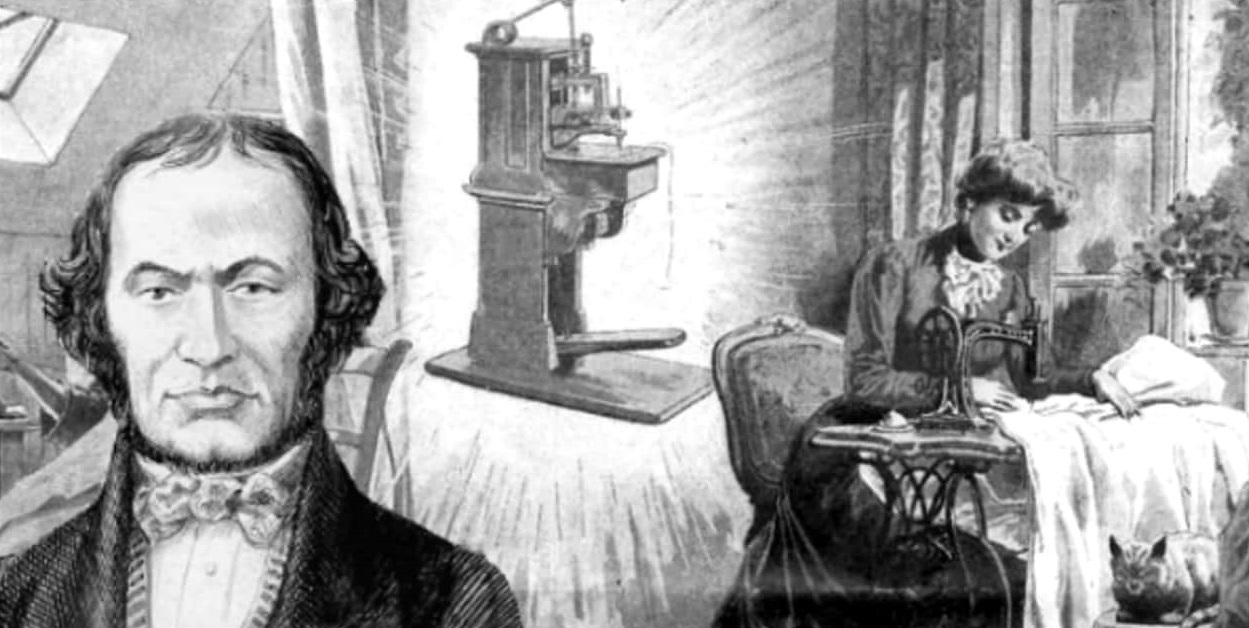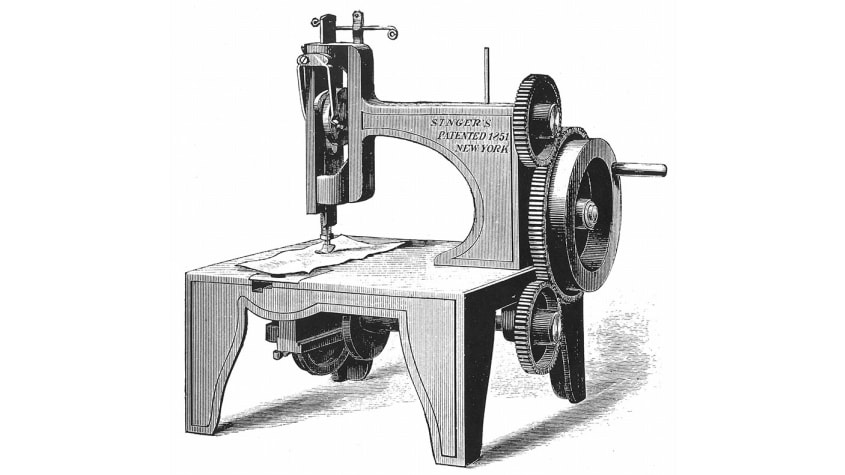Who Created the Sewing Machine?
26th Jan 2022
Who Invented the First Sewing Machine
Sewing machine history has taken a long and winding journey to get to the functional and efficient sewing machines we use today. There is no clear answer to who created the sewing machine, but there were many iterations and failed attempts along the way. In fact, there is still a bit of controversy over who can lay claim to being its inventor.
The first patent related to a sewing machine was issued in 1755, to Charles Weisenthal of Germany for his invention of a needle designed for a sewing machine. However, there is no evidence that he designed a machine to go with his needle.
It wasn’t until more than 30 years later, in 1790, that the first design for a sewing machine was created by a skilled cabinetmaker from England named Thomas Saint. He drew up designs for a hand-crank sewing machine meant to be used for leather and canvas — but it doesn’t appear that he ever built his invention.

After Thomas Saint’s design, many inventors attempted, and failed, to create a functional sewing machine. It wasn’t until 1830 that the first usable sewing machine was designed and built. A French tailor by the name of Barthélemy Thimonnier invented a machine that used one thread and needle to sew a chain stitch.
His machines were successful, and he was able to open a manufacturing company creating French army uniforms. However, other garment workers and tailors feared that his invention would cause them to lose their jobs — so they burnt down his factory and drove him from France.
When Was the First Sewing Machine Made in America
While inventors across Europe had been attempting to come up with a functional sewing machine, American inventors were also working on the problem of creating with a workable machine.
Following several earlier, unsuccessful inventions made by Americans, the first usable machine created in America was built by Walter Hunt in 1834. Unfortunately for Hunt, he never followed through on patenting his design, which really cost him later.
In 1846, the first American patent was issued to Elias Howe for a sewing machine that was very similar to Hunt’s machine. Though his machine was functional, American tailors just weren’t ready to change their ways and bring a machine into their workshops, so Howe was unable to sell any of those first sewing machines.
In an attempt to find buyers for his invention, Howe went to Europe for a time, but unfortunately didn’t have any more luck there. When Howe finally returned to America in 1849, he found that his patent was being infringed on, and many American inventors were producing very similar machines — including Isaac Merritt Singer.

Isaac Merritt Singer Patented the First Practical and Efficient Sewing Machine
Singer is probably the most well-known name in the history of the sewing machine, and for good reason. He was the one who successfully marketed the sewing machine and brought it to a mass market.
Singer’s sewing machine was the most practical and efficient machine yet, with a foot pedal instead of a hand-crank wheel and a needle that moved up and down instead of side to side. He pulled elements and inspiration from many previous designs, including those of Thimonnier, Hunt and Howe. Unfortunately for Singer, he used the same lockstitch with an eye-pointed needle and two thread sources that Howe had patented.

Howe, with no money and nothing to lose, took Singer (along with other sewing machine inventors) to court for patent infringement. The court upheld Howe’s patent and Singer was forced to pay him a lump sum up front as well as royalties on every machine sold. Thanks to a good patent on his invention, Howe died a very rich man.
Singer went on to build his company to massive success manufacturing sewing machines. He was a marketing genius and was the first to offer a hire-purchase system, in which customers could pay in monthly installments with interest rather than a lump sum up front.
The Many Different Types of Sewing Machines Available Today
These days, sewing machine manufacturing has advanced immensely and there are many different types of sewing machines available, each packed with different features and functionalities.
These are just some of the types of machines out there today:
- Domestic Sewing Machine: a machine made for home use rather than industrial use.
- Mini Sewing Machine: a compact, tiny machine great for small spaces.
- Industrial Flatbed Sewing Machine: the most common type of industrial sewing machine, great for sewing flat pieces of fabric together.
- Overlock (Serger) Sewing Machine: a machine that sews an overlock stitch, perfect for knit seams and finishing raw edges.
- Leather Sewing Machine: a machine (usually industrial) made specifically for sewing tough leather goods.
- Cover Stitch Machine: a machine that sews a coverstitch, often used for knitwear and activewear.
- Button Sewing Machine: an industrial machine that sews many types of buttons onto garments.
- Buttonhole Machine: an industrial machine that sews buttonholes.
- Bar Tack Machine: an industrial sewing machine that creates different sizes and shapes of bar tacks.
- Blind-Stitch Machine: an industrial sewing machine that sews a blind stitch, usually used for almost-invisible hems on formal clothing.
- Merrow Purl Machine: an industrial sewing machine that sews delicate rolled hems, perfect for lightweight fabrics.
- Embroidery Machine: a sewing machine capable of sewing embroidery designs onto fabric, often with many different thread colors.
- Quilting Machine: a machine made specifically for easier quilting with a great straight stitch, a very wide throat space and sometimes a long arm.
Fun Facts about Sewing Machines
The sewing machine was a game-changer in the late 1800s. It had a profound impact on the social lives of women during that time period, along with some controversy surrounding its original inventor. Here are some fun facts about sewing machines you may not know.
The home sewing machine reduced sewing times from over 14 hours by hand to just one hour! In fact, the invention of the sewing machine freed up several hours of work for women in the home, allowing them to explore other activities and interests.
National Sewing Machine Day is June 13 and celebrates what is still considered a modern invention with a growing base of sewers and sewing enthusiasts.
Isaac Merritt Singer is not credited with inventing the sewing machine, but he patented what was considered the most efficient sewing machine in 1851.




